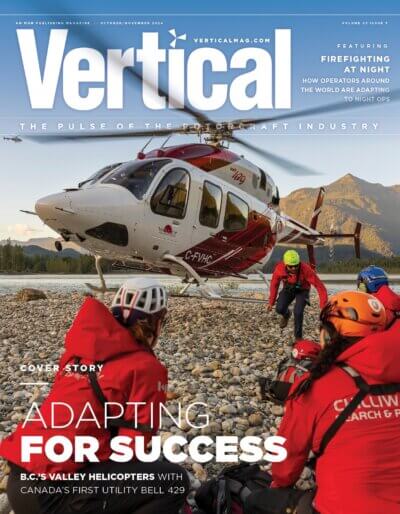BUYING A HELICOPTER
How helicopter leasing companies are bouncing back
Experts on the helicopter leasing sector give their views on the state of the market and the major themes for 2024.

By: Gerrard CowanPosted on: November 4, 2024
It has been a tough decade for the helicopter leasing market, but industry insiders see positive signs in oil-and-gas, emergency medical services (EMS), search-and-rescue (SAR) and beyond, with some even expanding their fleets to include electric vertical takeoff and landing (eVTOL) platforms.
The oil-and-gas slump of 2014 had a significant negative impact on the leasing sector, said Clark McGinn, a former executive at Waypoint Leasing and CHC Helicopter, who today works as an independent consultant. Combined with the Covid-19 pandemic, this “hit the demand for leasing helicopters to the energy sector for nearly a decade.”
However, HAI Heli-Expo at the end of February showed “a much more buoyant helicopter market than we’ve seen over the last five or six years, with record footfall and number of exhibitor stands,” McGinn said. The past six months has brought a return to equilibrium, he said, with Russia’s full-scale invasion of Ukraine having pushed oil prices upwards.
“Because the energy companies need large, robust machines, that sector is by far the biggest in value to the lessors, so they, too, are just coming out of the doldrums,” he said.
Even during tougher times, lessors were incentivized to find other uses for helicopters.
While changing geography and mission configuration is expensive, they found good traction in areas like EMS, SAR and supporting wind farms, McGinn noted.
“With the recovery in the oil price, the overhang of idle helicopters has been eliminated,” he said. “In fact, the [Sikorsky] S-92 and [Leonardo] AW139 fleets are pretty much back at full capacity.”
The recent demand brings supply chain challenges, McGinn said. While he pointed to several large orders at Heli-Expo, “the supply chain, after so many quiet years, is finding it hard to regain capacity in the face of quickly rising demand.”
Even so, McGinn said the leasing sector has turned a corner. “While there are several bumps in the road ahead — mainly interest rates and supply chain — the outlook is for significantly improved demand, which will see both improved income and helicopter valuations.”
The signs of a turnaround were on full display in late April, when a new helicopter leasing and finance company was launched in Dublin, Ireland. GD Helicopter Finance (GDHF), a subsidiary of Chinese company GDAT, entered the market with an existing order book of 50 Airbus H160s, before then placing an order for 20 Airbus H175s. The company also lists Leonardo AW189s and AW139s in its fleet.
The new company is led by Michael York, who was previously joint head of commercial at leasing giant Milestone Aviation. York said the company would offer near-term availability of the “newest technology, efficient, cost-effective, multi-mission helicopters” through its existing order book of H160s, as well as an additional order of super mediums.
The energy sector
Demand in the offshore sector is buoyant, with considerable future growth potential, said Con Barber, chief investment officer at Macquarie Rotorcraft Limited (MRL). Recent geopolitical events have underpinned concerns over energy security, with increases in offshore oil production expected by 2030, along with a surge in wind energy, he noted.
The offshore segment is the dominant leasing market, Barber said. While helicopter leasing penetration overall is about 15 percent (compared with 50 percent in commercial fixed-wing aircraft), the proportion is higher in offshore. There, about a third of helicopters are under lease. This compares with around 15 percent in EMS and eight percent in SAR, he said.
“The size of the offshore market is expected to increase as operators continue to rationalize their balance sheets and seek efficient sources of funding in a capital constrained market,” Barber added.
Given the relatively low levels of lease penetration across different markets, MRL adopts a diversified portfolio strategy, Barber said, enabling the lessor to adapt to future changes. In the past year, it has invested in one heavy platform (a Sikorsky S-92), four super mediums (Leonardo AW189 and Airbus H175), 16 mediums (Leonardo AW139 and Bell 412), and five intermediate-light twins (Leonardo AW169, Leonardo AW109, Airbus H145 and Airbus H135). “We also have a strong pipeline for further fleet growth, targeting modern helicopters in all market segments,” said Barber.
The lessors are also exploring opportunities in renewables, such as wind energy. Barber said this is a focus for MRL. “Helicopters play a critical role in the energy transition by enabling the transition from high carbon sources of energy such as coal to low carbon offshore natural gas and ultimately to wind energy,” he said. “MRL’s future investments will continue to focus on efficient helicopters that will enable sustainable energy solutions.”
Nigel Leishman, chief commercial officer at LCI, said oil-and-gas makes up less than 30 percent of the use of his company’s helicopter fleet. Still, demand in the sector is strong, he said, highlighting the tight supply chain and the wider economic environment.
“We have seen more lease extension of helicopters currently operating in this sector, as well as deliveries of new helicopters,” said Leishman. “In both cases, lease rentals have increased, partly through higher demand — but also reflecting underlying economic factors, including escalation and increases in interest rates.”
Leishman also pointed to the potential of other areas of the energy sector, notably offshore wind production. This is still developing as a focus for helicopter support, he noted, but LCI expects to see significant growth in the coming decade. LCI delivered the first-ever dedicated offshore wind helicopters to the U.S. in 2023, and expects to see more activity in the market. “There are also emerging opportunities in other countries, including Japan, South Korea, Australia and even Brazil,” he said.
EMS, SAR and Firefighting
Emergency services are a major focus for several companies in the leasing sector. About two-thirds of LCI’s fleet of 150 aircraft are engaged in areas like EMS and SAR, along with offshore wind, Leishman said.
These “mission critical” sectors are growing strongly, he said. For example, there has been rapid growth in EMS in Australia and Asia. “We have seen significant increase in tender activity over the last 12 to 18 months,” Leishman said. “This is partly due to delays during the Covid period, but also driven by replacement activity in several markets where we are seeing many operators moving up to larger, new-generation helicopters.”
Offshore energy growth is helping to drive growth in EMS and SAR, Barber noted. “Energy companies are contracting SAR services in parallel with their expansion of crew transport helicopters, especially in emerging markets where government-provided coast guard services are not available. MRL has placed several SAR and LIMSAR [limited SAR capability] helicopters in these roles in recent years.”
Gustavo Semeraro, senior vice president of global business development at Lobo Leasing, said the company is highly focused on critical missions, including EMS, SAR and firefighting. Most of the company’s committed funding is aligned to these missions, he said, rather than oil-and-gas.
Semeraro said firefighting is growing as an area of particular demand, thanks to an increase in wildfires. “This is a worldwide problem and demanding all types of aircraft to support it, from fixed-wing to helicopters,” he noted.
Leishman also pointed to growing demand from the firefighting sector. “While firefighting has typically seen the use of older helicopters on short-term contracts, fire seasons in many parts of the world have expanded,” he said. “We see more end-users and governments looking to secure newer, more capable helicopters on longer contracts.”
New aircraft, new markets
Lobo Leasing has a strong interest in advanced air mobility (AAM) and eVTOLs, having begun discussions with developers worldwide in 2019-2020, said Semeraro. The company has a partnership with Pipistrel, which saw it order 15 of the manufacturer’s hybrid-electric VTOL (or hybrid eVTOL) Nuuva V300 autonomous cargo aircraft back in 2022. Since then, it has announced deals to lease these platforms to its customers. For example, it signed a letter of intent to lease one Nuuva V300 to HeliOperations in 2023.
Semeraro said that such platforms are likely to see demand in humanitarian work initially, before complementing offshore helicopters by transporting cargo to oil rigs. “Cargo transportation aircraft are going to open the doors for all the other type of eVTOLs,” he said, opening opportunities for the leasing sector.
Leishman said LCI is also increasingly focused on AAM, and has committed to up to 165 electric or hybrid-electric VTOL aircraft from Beta Technologies and Elroy Air. In addition to this, it has signed a long-term collaboration agreement with Airbus to develop new ecosystems for AAM, he noted.
Leishman pointed to initial demand for such aircraft in mission critical areas, such as remote logistics, humanitarian aid, and aeromedical, including organ transfers. This will be part of a broader move to a more sustainable future, he added.
“This will complement our existing helicopter fleet and we are working together with several of our existing customers to see how we can start to move toward a more sustainable future,” Leishman said. “This may be beyond the one- to two-year timeframe, but together with our operators and suppliers, we are already making significant steps forward, including with sustainable aviation fuel [SAF], which can be used on all of our new-generation helicopters.”
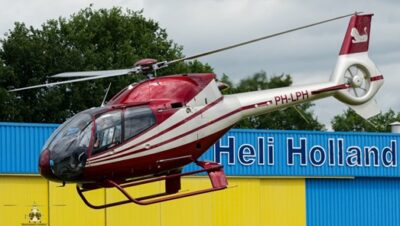
Airbus EC120B
Contact seller for price
Year: 2001

Airbus AS350B3
USD $ 1,599,000
Year: 2004
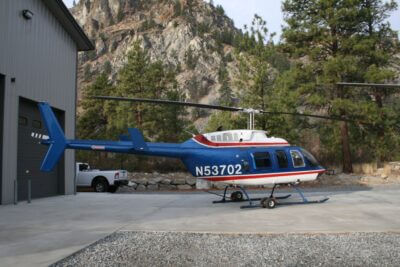
Bell 206L3
Make an offer
Year: 1992

Bell 206L4
Make an offer
Year: 1996
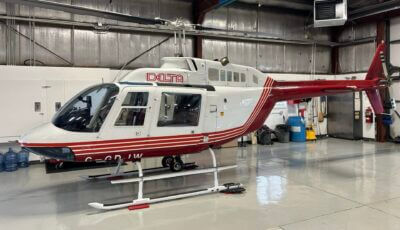
Bell 206B3
Contact seller for price
Year: 1979

Bell 206B3
Contact seller for price
Year: 1980

Airbus AS355F2
Contact seller for price
Year: 1992

Bell 206B3
Contact seller for price
Year: 1973
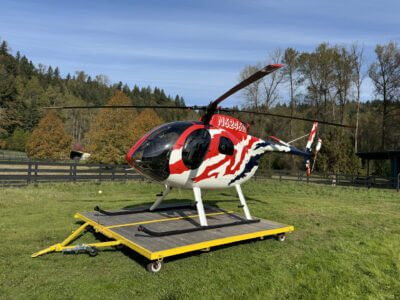
MD Helicopters 369A
Contact seller for price
Year: 1968
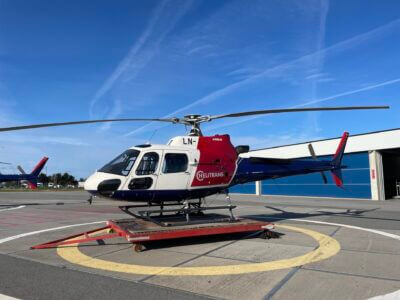
Airbus H125
EUR € 2,400,000
Year: 2020





